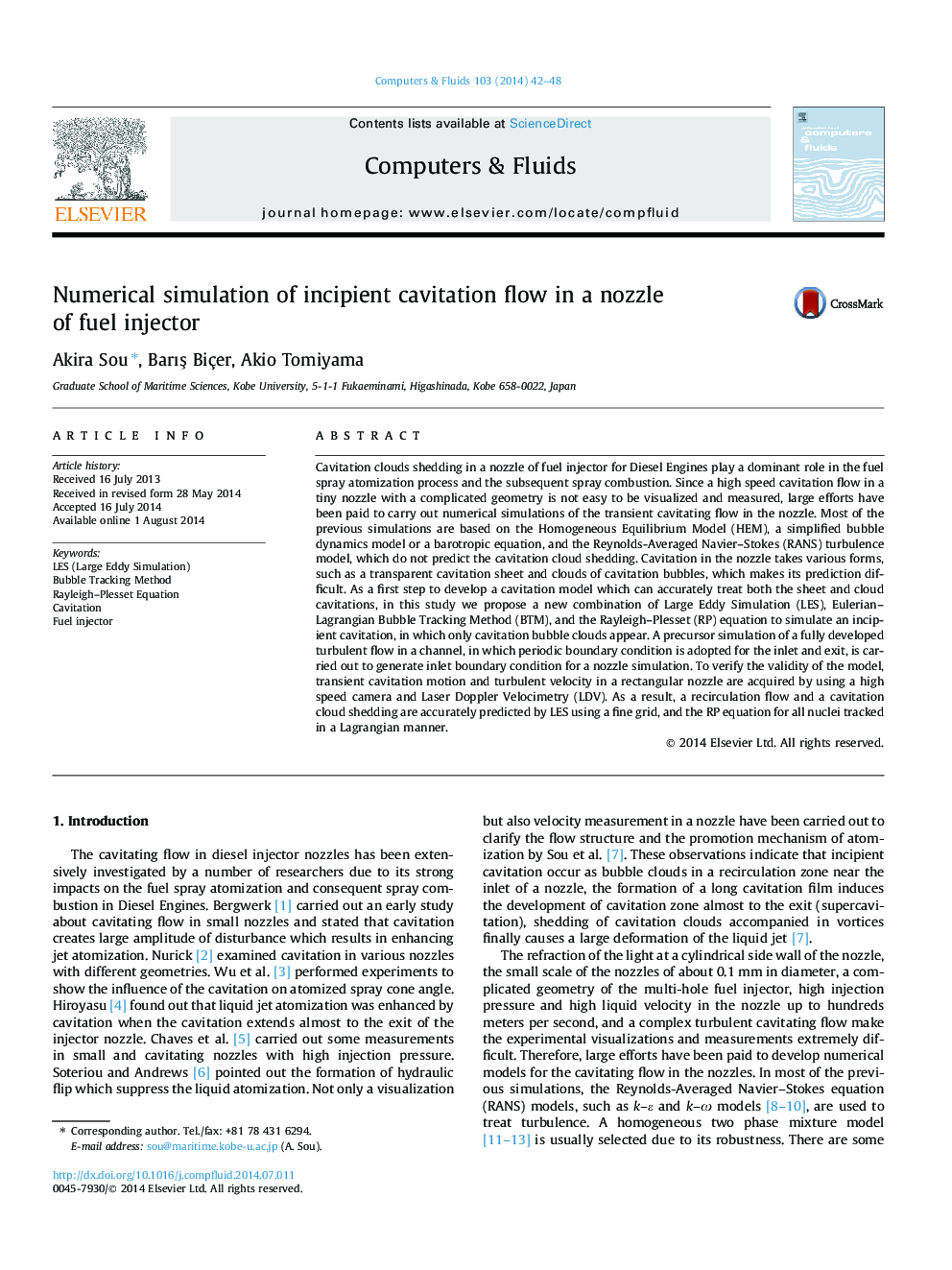| Article ID | Journal | Published Year | Pages | File Type |
|---|---|---|---|---|
| 761842 | Computers & Fluids | 2014 | 7 Pages |
•We examined the incipient and developing cavitation flows in fuel injector.•We proposed a turbulent cavitating flow model based on LES, BTM and RP equation.•We offered quantitative experimental data on transient cavitation images and liquid velocity.•Thickness, length and cloud shedding of cavitation in nozzle are predicted quantitatively.
Cavitation clouds shedding in a nozzle of fuel injector for Diesel Engines play a dominant role in the fuel spray atomization process and the subsequent spray combustion. Since a high speed cavitation flow in a tiny nozzle with a complicated geometry is not easy to be visualized and measured, large efforts have been paid to carry out numerical simulations of the transient cavitating flow in the nozzle. Most of the previous simulations are based on the Homogeneous Equilibrium Model (HEM), a simplified bubble dynamics model or a barotropic equation, and the Reynolds-Averaged Navier–Stokes (RANS) turbulence model, which do not predict the cavitation cloud shedding. Cavitation in the nozzle takes various forms, such as a transparent cavitation sheet and clouds of cavitation bubbles, which makes its prediction difficult. As a first step to develop a cavitation model which can accurately treat both the sheet and cloud cavitations, in this study we propose a new combination of Large Eddy Simulation (LES), Eulerian–Lagrangian Bubble Tracking Method (BTM), and the Rayleigh–Plesset (RP) equation to simulate an incipient cavitation, in which only cavitation bubble clouds appear. A precursor simulation of a fully developed turbulent flow in a channel, in which periodic boundary condition is adopted for the inlet and exit, is carried out to generate inlet boundary condition for a nozzle simulation. To verify the validity of the model, transient cavitation motion and turbulent velocity in a rectangular nozzle are acquired by using a high speed camera and Laser Doppler Velocimetry (LDV). As a result, a recirculation flow and a cavitation cloud shedding are accurately predicted by LES using a fine grid, and the RP equation for all nuclei tracked in a Lagrangian manner.
